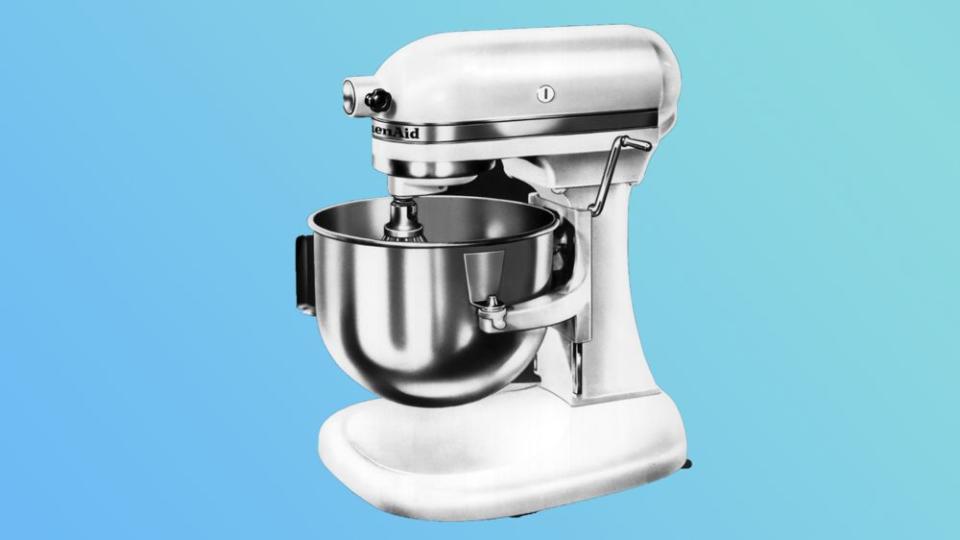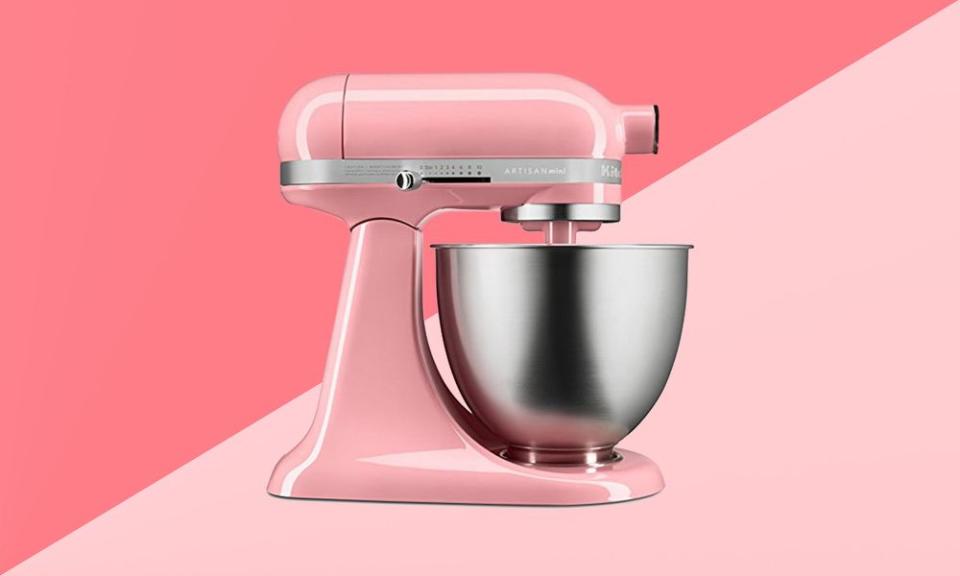My Lemon Cookie Disaster and Other KitchenAid Mixer Mistakes

On a very off-season, spur-of-the-moment whim, I decided to make lemon cookies while I was home for Christmas last year. It’s probably because I just wanted an excuse to test out my mom’s brand new KitchenAid mixer.
This wasn’t my first time ever using a stand mixer, but I don’t own one and definitely had never read the manual. Regardless, I was thrilled to start my first baking project.
WATCH: Stand Mixer Hacks
The lemon cookie dough whipped up nicely and tasted perfect in raw dough form (don’t do as I do), but as soon as I started to scoop the dough onto my baking sheet, something looked off. I noticed a disconcerting shade of gray streaking many different areas of the dough, and an overall dull tinge that wasn’t consistent with the usual vibrant yellow I expected.
I thought maybe I had added a wrong ingredient or something had fallen in the mixer by mistake. But as I kept scooping (and throwing out) more rounds of the stained dough I realized that the coloring was coming from the mixing bowl itself.
Read more: What You Should Consider When Purchasing Your First KitchenAid Mixer
At first, I assumed the aluminum coating was breaking down due to the acid of the lemon juice and seeping into the dough. But after a little research, I found that it was really just a mechanical polish that is used to finish the bowl inside and out.
The polish is food-safe, but it can discolor and alter your food. The residue can even stick around even after a run through the dishwasher, so KitchenAid recommends a handful of alternate cleaning methods, such as:
Scrubbing the bowl with salt and a squeeze of lemon juice, then rinsing with warm water
Wiping the bowl down with olive oil, waiting a few minutes, then washing the bowl with hot water and dish soap
Forming a paste out of baking soda and water, scrubbing the surface down with it, and rinsing with warm water
Using an abrasive cleaner like AJAX and washing with warm water
Long story short, my cookies were trashed (because what’s appealing about a gray lemon cookie?) and my enthusiasm was slightly dulled, but I decided to dig into other common problems I might encounter with the mixer before jumping into another project.
So if you’re new to the KitchenAid miracle mixer like me or just haven’t hauled it out of the cabinet more than a handful of times, here are a few tips to keep in mind for hiccup-free baking.
Read more: KitchenAid Is Releasing 5 New Bowl Designs, So You Can Make Your Stand Mixer Look Even Cuter
Not adjusting for clearance
There is a sweet spot with the height level of your KitchenAid attachments. If it’s too high, the ingredients toward the bottom of the bowl won’t get mixed in completely. If it’s too low, the attachment and bowl can get damaged pretty quickly.
KitchenAid recommends a method for testing the clearance level that they call the “dime” test. This experiment only works with stainless steel bowls, but it gives you a visual of how much agitation the ingredients on the very bottom of the bowl get in a typical spin.
If the clearance of your bowl needs to be adjusted, there’s an easy procedure that just involves one screw on your machine. For more details, check out our in-depth guide to fixing this common problem.

Choosing the wrong attachment
KitchenAid has an extensive line of attachments for a reason. We certainly aren’t saying you need them all, but depending on the type of job you’re doing, having the proper attachment is the key to success.
Make sure you understand the function of each attachment before you get started on a project:
Wire whisk: whipping up frosting, egg whites, or heavy cream
Dough hook: kneading tougher doughs like pasta or bread dough
Coated flat beater: combines cookie doughs and cake batters
Flex edge beater: scrapes the bowl to thoroughly combine looser batters or sticky doughs
Washing all parts in the dishwasher
If you throw all the mixer parts in the dishwasher without checking to see if they’re dishwasher-safe, you might damage or shorten the life of the parts. Burnished attachments are made of polished aluminum and are not dishwasher safe. Even soaking these parts in water will cause them to oxidize. Instead, wash with soap and warm water and hand-dry immediately.
Stainless and coated attachments are dishwasher safe, but it is recommended that you put them on the top rack of your dishwasher. Some stainless wire whips are burnished aluminum at the base, so they are not dishwasher safe.
As for the stainless steel bowl, it can also go in the dishwasher, but it should be rinsed well if you don’t plan on washing it immediately. Contact with salt, milk products, vinegar, or juices for a long period of time can damage the bowl’s finish.

Plugging into a power strip
With all of the other electric appliances in your kitchen, it’d be easy to plug your mixer into your universal powerstrip. But as Taste of Home points out, the KitchenAid mixer uses a significant amount of energy to power the heavy-duty motor.
Plugging the machine into a powerstrip with other cords creates the risk of damaging the motor or even starting a fire. Be on the safe side and plug the mixer directly into the wall to keep it running smoothly.
Splashes and flour bombs
It only takes about one trial run with the mixer to realize you need to pour ingredients in very slowly. You also want to keep the speed on low as you add in new items (to spare your clothing and countertops).
But if you are continually a repeat offender when it comes to mixer messes, it might be worth looking into a
that will help you keep all the ingredients in the bowl rather than flying out of it. Just place the splash guard on top of your mixing bowl and add ingredients via the wide chute. It might be one extra step in the mixing process, but it will definitely spare you clean up time.

